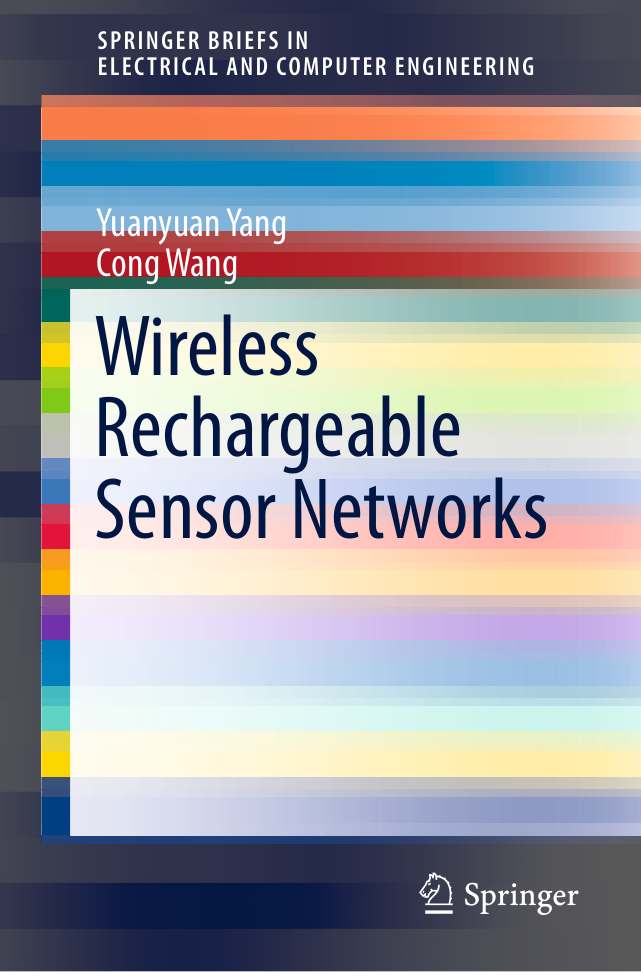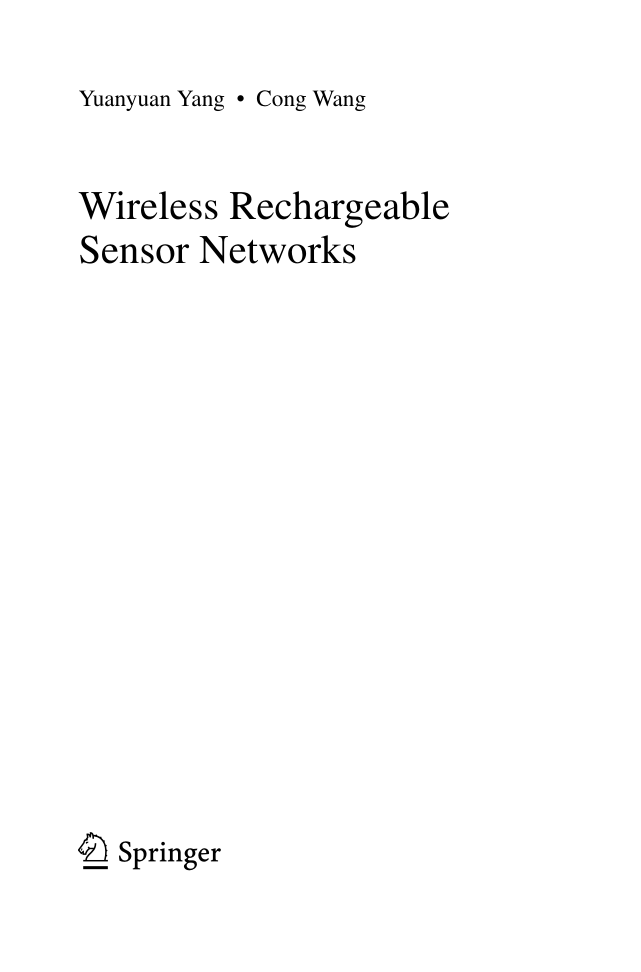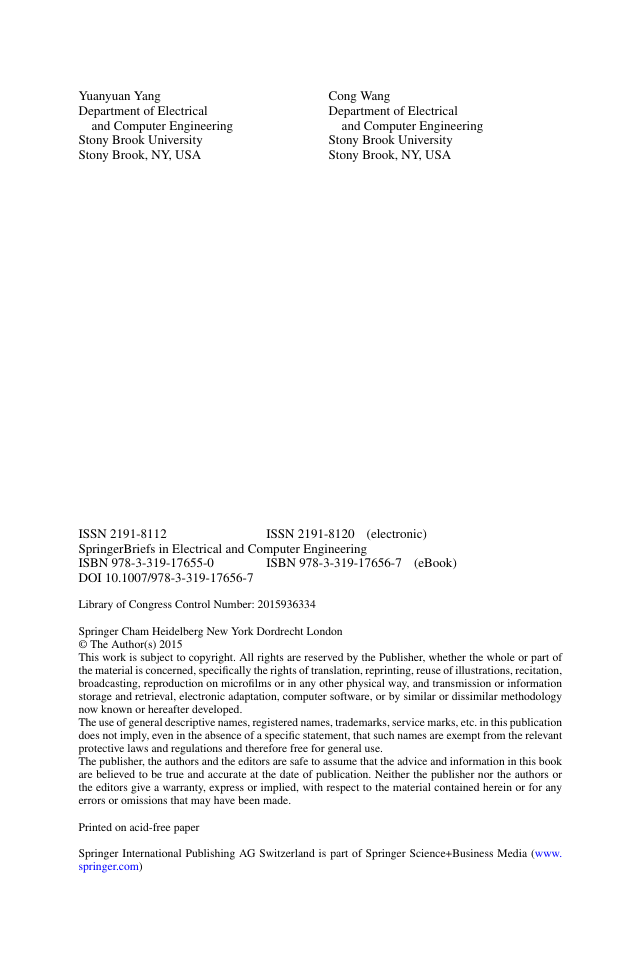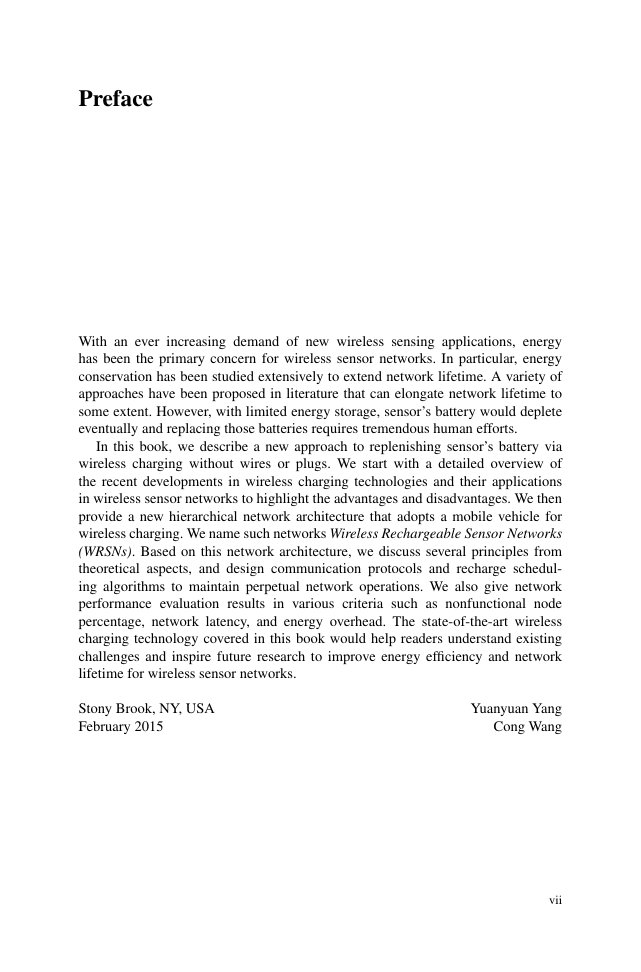Preface
Acknowledgments
Contents
Acronyms
1 Introduction
1.1 Introduction and Background
1.2 Wireless Charging Technology
1.2.1 Electromagnetic Radiation
1.2.2 Magnetic Resonant Coupling
1.3 Summary
References
2 Network Architecture and Principles
2.1 Network Components
2.2 Principles in Wireless Rechargeable Sensor Networks
2.2.1 Energy Neutrality
2.2.2 Estimation of Node Lifetime
2.2.3 Adaptive Recharge Threshold
2.3 Summary
References
3 Distributed Node Status Reporting Protocol
3.1 Overview
3.2 Protocol Design
3.2.1 Head Election
3.2.2 Status Request
3.2.3 Status Report and Recharge
3.2.4 Emergency Report and Recharge
3.2.5 Head Hierarchy Maintenance
3.3 Summary
References
4 Recharge Scheduling
4.1 Emergency Recharge Scheduling Problem
4.2 Normal Recharge Scheduling
4.2.1 Weighted-Sum Algorithm
4.2.2 Adaptive Recharge Scheduling Algorithm
4.2.2.1 Adaptive Network Partitioning
4.2.2.2 Generating Capacitated Minimum Spanning Tree
4.2.2.3 Insertion Algorithm for Recharge Route Improvement
4.2.2.4 Computation Complexity
4.3 Summary
References
5 Performance Evaluations
5.1 Parameter Settings
5.2 Comparison of Recharge Scheduling Algorithms
5.3 Node Nonfunctionality
5.4 Energy Evolution
5.5 Duration of Nonfunctional Status
5.6 Data Collection Latency
5.7 Overhead of Node Status Collection Protocol
5.8 Charging Vehicle's Moving Energy Cost
5.9 Comparison with Static Optimization Approach
5.10 Summary
References
6 Conclusions
Glossary
















 2023年江西萍乡中考道德与法治真题及答案.doc
2023年江西萍乡中考道德与法治真题及答案.doc 2012年重庆南川中考生物真题及答案.doc
2012年重庆南川中考生物真题及答案.doc 2013年江西师范大学地理学综合及文艺理论基础考研真题.doc
2013年江西师范大学地理学综合及文艺理论基础考研真题.doc 2020年四川甘孜小升初语文真题及答案I卷.doc
2020年四川甘孜小升初语文真题及答案I卷.doc 2020年注册岩土工程师专业基础考试真题及答案.doc
2020年注册岩土工程师专业基础考试真题及答案.doc 2023-2024学年福建省厦门市九年级上学期数学月考试题及答案.doc
2023-2024学年福建省厦门市九年级上学期数学月考试题及答案.doc 2021-2022学年辽宁省沈阳市大东区九年级上学期语文期末试题及答案.doc
2021-2022学年辽宁省沈阳市大东区九年级上学期语文期末试题及答案.doc 2022-2023学年北京东城区初三第一学期物理期末试卷及答案.doc
2022-2023学年北京东城区初三第一学期物理期末试卷及答案.doc 2018上半年江西教师资格初中地理学科知识与教学能力真题及答案.doc
2018上半年江西教师资格初中地理学科知识与教学能力真题及答案.doc 2012年河北国家公务员申论考试真题及答案-省级.doc
2012年河北国家公务员申论考试真题及答案-省级.doc 2020-2021学年江苏省扬州市江都区邵樊片九年级上学期数学第一次质量检测试题及答案.doc
2020-2021学年江苏省扬州市江都区邵樊片九年级上学期数学第一次质量检测试题及答案.doc 2022下半年黑龙江教师资格证中学综合素质真题及答案.doc
2022下半年黑龙江教师资格证中学综合素质真题及答案.doc